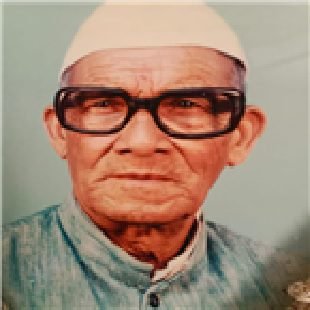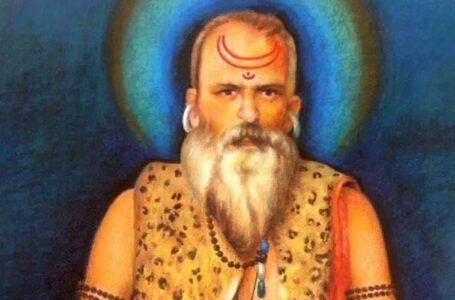Sher Singh Shah: The Silent Patriot from Kedarnath Ghati

In Indian history fame and recognition never made it to the forefront. Despite their blood sweat and tears, their stories often remain buried beneath the tales of more prominent figures. Yet, it was these quiet patriots, those who worked tirelessly behind the scenes, who helped shape the India’s destiny. One such hero was Sher Singh Shah, a freedom fighter from the small village of Nala, near Guptkashi, in the Rudraprayag district of Uttarakhand. Born into a modest farming family, Sher Singh Shah’s life is a testament to the spirit of selfless service, patriotism, and dedication to the cause of India’s freedom.
Sher Singh Shah was born on September 16, 1912, in the remote village of Nala, located near the Kedarnath Road in the Rudraprayag district. His father Padam Singh Shah was a farmer and the leader of the village, and his mother, Devki Devi, was a homemaker. It was due to this that Shah was able to cultivate a sense of leadership and yet stay humble to his roots. Something that would greatly benefit him in the future. The simplicity of his upbringing in a region known for its spiritual significance shaped Sher Singh Shah’s character and values. It was because of factors like these that he could foster deep connections with people.
Despite financial and socio-economic roadblocks, Sher Singh Shah received his early education in his village in Ukhi Block. Education during those times was a privilege, and Sher Singh Shah was fortunate enough to access it. However, major political changes were made across the country, and the Indian independence movement was gaining momentum. It was during these formative years that Sher Singh Shah’s political agendas started taking form.
INVOLVEMENT IN THE FREEDOM STRUGGLE
By the time Sher Singh Shah was an adult, the Indian independence movement was in full swing. At the age of 38, he was approached by the people of his village to assist in the struggle against British rule. The villagers recognized his dedication and trusted him enough to deliver messages and perform critical tasks related to the freedom movement. Sher Singh Shah was known to be adept at carrying out these duties without attracting the attention of the British authorities.
Sher Singh Shah’s commitment to the cause was solidified by a significant event in his life. At the Lalitamai temple in Nala, he took a solemn oath to dedicate his life to the service of his country. This religious commitment further strengthened his drive to be an active participant in the freedom struggle.
One of Sher Singh Shah’s notable contributions to the freedom movement was his role in spreading awareness among the local population. The region around Guptkashi, like many parts of rural India, was largely cut off from the major centres of political activity. However, Sher Singh Shah recognized the importance of mobilising people from every corner of the country, including the remote Kedarnath Ghati, to participate in the struggle for independence.
He would attend the weekly market near Guptkashi, a gathering place for people from various villages, and secretly distribute pamphlets containing messages about the freedom movement. These leaflets were often the only source of information for many villagers, and they played a crucial role in creating public awareness. Through these actions, Sher Singh Shah became the stimulus for change, urging the people to rise against British rule and join the national movement.
LEADERSHIP IN THE QUIT INDIA MOVEMENT
The year 1942 marked a turning point in India’s struggle for independence. The Quit India Movement called for the immediate withdrawal of British rule from India. With its slogan “Do or Die”, this movement spread across like wildfire in the nation, igniting rebellion in every town and village. Kedarnath Ghati, a remote region too, was no exception.
Sher Singh Shah emerged as the prime leader during this movement in the Kedarnath Ghati area. His deep connection with the locals there, coupled with his unwavering commitment to the cause, made him an ideal leader for that region. He rallied the people of Kedarnath Ghati, instilling in them a sense of patriotism and determination to fight for their country’s cause.
During this period, Sher Singh Shah came into contact with other well-known freedom fighters such as Anusuya Prasad Bahuguna, another popular leader in the state of Uttarakhand. Their collaboration further strengthened the movement in Uttarakhand and was instrumental in mobilising the people of Kedarnath Ghati to participate in protests, mass strikes and other forms of resistance against the British government.
However his involvement in the freedom struggle was not without its challenges and roadblocks. His activities eventually ended up drawing the attention of the British authorities. In response, they placed him under house arrest in his home at Nala Guptkashi for six months. However, this setback could not deter his spirit. He continued to inspire and guide the people from the confines of his home.
Later, Sher Singh Shah was arrested and sent to Bareilly jail, where he endured inhuman torture at the hands of the British. The deplorable conditions of the jail, coupled with the physical abuse inflicted upon him, took a severe toll on his health. Despite the sufferings he endured, Sher Singh Shah put on a brave face and kept fighting, to maintain his integrity to the cause.
CONCLUSION
Sher Singh Shah’s health deteriorated rapidly due to the brutal treatment inflicted on him in prison. Yet, he continued to believe in the dream of a free India, even when his body grew weaker. After a life dedicated to independence and the freedom struggle. Sher Singh Shah left an enduring legacy behind and passed away on February 12, 1991.
Sher Singh Shah’s life is a reminder of the countless unsung heroes who played a crucial role in India’s struggle for independence. He was a man who, despite the challenges and hardships he faced, remained committed to the ideals of freedom and justice.
Sher Singh Shah’s story is one of quiet heroism, of a man who without desiring fame or recognition, worked tirelessly to the bone for his country. His contributions to the freedom movement in Kedarnath Ghati and his leadership during the Quit India Movement are a testament to his unwavering dedication to freedom, often at great personal cost. His sacrifices and contributions to this day do not fail to inspire us, reminding us, about the indomitable human spirit and its power to make a change.


